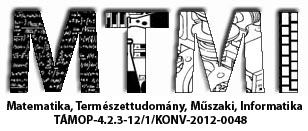Thrombin Potential, a new measure of hypo- and hypercoagulability state. Can whole blood be used reliably?
Abstract data
Background: Fluorogenic substrate ZGGR-7-amido-4-methylcoumarin (ZGGR-AMC) is a synthetic peptide compound specific for thrombin with low binding affinity and slow conversion. Cleavage of this substrate releases the fluorophore AMC allowing real time measurement of thrombin. Measurement of thrombin activity allows one’s thrombin potential to be calculated from the generation of thrombin in a given time. The use of this substrate to determine thrombin potential in whole blood is currently under debate. Objective: The aim of the work was to contribute to the exploration of problems associated with whole blood thrombin potential determination using fluorogenic substrate compared to platelet-poor plasma and platelet-rich plasma, which are already widely used as a research tool. Method: The new approach involved spiking whole blood, platelet-rich plasma, platelet-poor plasma and buffer with thrombin and measuring the recovery using fluorogenic substrate by quantifying the light detected at 460 nm, post 360 nm excitation in these matrices. Results: The effect of exogenous thrombin concentration on the rate of light detection was best characterised in the time interval by a linear response. The parameters of these lines demonstrated the slope for buffer was greatest (1.6 ± 0.05) and reduced for platelet-rich plasma (1.34 ± 0.16), platelet-poor plasma (1.03 ± 0.12) and whole blood (0.44 ± 0.03); being 82%, 71%, and 28% of buffer, all showing significant difference; P=0.04, P<0.01 and P<0.01 respectively. Platelet-rich plasma had the greatest intercept value followed by platelet-poor plasma, buffer and then whole blood, the latter two were close to zero. Conclusion: The low rate of light detection in the presence of erythrocytes can be explained by the absorptive characteristics of haemoglobin and clarifies why high variation has been observed previously by others. Both the excitation and emission wavelengths of fluorogenic substrate ZGGR-AMC fall within haemoglobin’s absorption range. The presence of haemoglobin therefore prevents the use of this substrate for the determination of thrombin potential in whole blood.
Támogatók: Támogatók: Az NTP-TDK-14-0007 számú, A Debreceni Egyetem ÁOK TDK tevékenység népszerűsítése helyi konferencia keretében, az NTP-TDK-14-0006 számú, A Debreceni Egyetem Népegészségügyi Karán folyó Tudományos Diákköri kutatások támogatása, NTP-HHTDK-15-0011-es A Debreceni Egyetem ÁOK TDK tevékenység népszerűsítése 2016. évi helyi konferencia keretében, valamint a NTP-HHTDK-15-0057-es számú, A Debreceni Egyetem Népegészségügyi Karán folyó Tudományos Diákköri kutatások támogatása című pályázatokhoz kapcsolódóan az Emberi Erőforrás Támogatáskezelő, az Emberi Erőforrások Minisztériuma, az Oktatáskutató és Fejlesztő Intézet és a Nemzeti Tehetség Program



